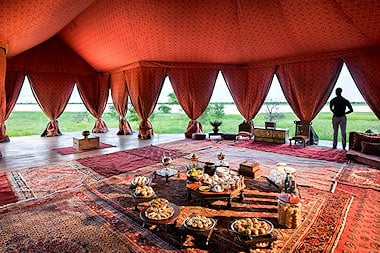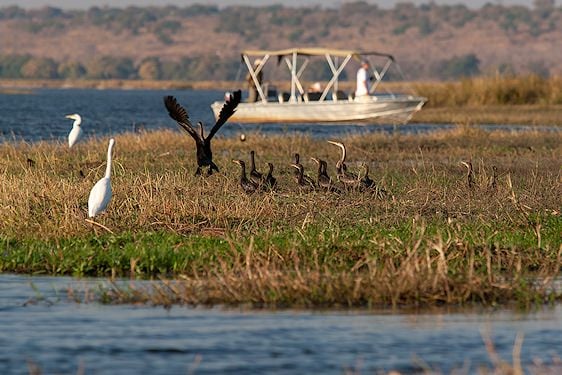- Home
- >
- African Travel
- >
- South Africa
- >
- National Parks
- >
- Kruger National Park
- >
- Mammals
- >
- Hippopotamus
Description
The hippopotamus is one of the largest land mammals. Thick gray-brown skin, a barrel-shaped body, and massive jaws make identification easy. By day, hippo rest submerged to keep cool and protect sensitive skin; at night they walk several kilometers to graze. In Kruger National Park, reliable sightings occur along major rivers and waterholes.

Hippo occur in South Africa’s northeastern river systems and across much of sub-Saharan Africa, including Mozambique, Zambia, Zimbabwe, Tanzania, Kenya, and the Democratic Republic of the Congo, with strong populations in the Okavango Delta. They primarily graze short grasses at night rather than aquatic plants.
Best Safari Tours for Viewing Hippo
Experience Botswana’s finest lodges and safari areas before visiting Victoria Falls.
Combine two iconic private reserves bordering Kruger National Park.
Safari in Phinda with excellent hippo viewing followed by a Mozambique beach escape.

Status
The common hippopotamus is listed as Vulnerable, with threats including habitat loss, conflict, and drought impacts on river and lake systems. Continental estimates are roughly in the low hundreds of thousands, with some Southern African populations stable. In Kruger National Park, hippo remain abundant along major rivers.

Habitat
Hippo require permanent water deep enough to submerge during the day and nearby grazing. Sensitive skin necessitates daytime immersion to prevent dehydration and sun damage. They emerge at dusk to feed, often walking several kilometers to short-grass lawns. Diet is primarily terrestrial grasses rather than aquatic plants.

Social Organization
In water, adult males are territorial and defend stretches of river that include groups of females and young. Hierarchies determine access to mates. Mixed pods share resting areas, and crocodile often occur nearby without threatening healthy adults. Females are highly protective of calves and may act aggressively when threatened.
Finest Safari Areas in Africa for Encountering Hippopotamus
We recommend the following national parks and private reserves for the best chances of spotting hippo on safari game drives and bush walks.

Social Behavior
Adult males defend aquatic territories; displays include yawning to show canines, vocalizing, and dung-spraying. Pods rest closely together by day and disperse at night to feed. Tolerance of other species in water is common, but females react swiftly if a calf is at risk.

Reproduction
Breeding often peaks in drier months with calving in the rains. Gestation is about eight months, and females typically bear a single calf about every two years. Females reach sexual maturity from roughly five to ten years, and males later, once able to compete for access to females.

Anti-Predator Behavior
Healthy adult hippo face few natural predators. Calves are vulnerable to lion and spotted hyena on land and to crocodile in water. When threatened, hippo respond with intimidation displays, and females may charge to protect calves; sheer size and group cohesion usually deter predators.















